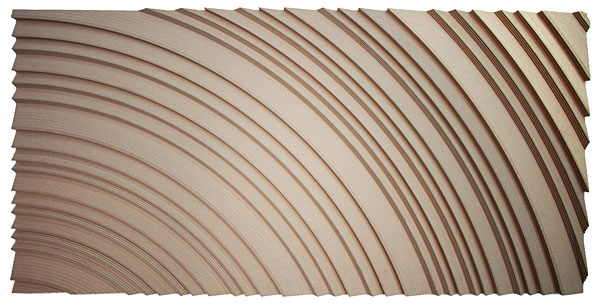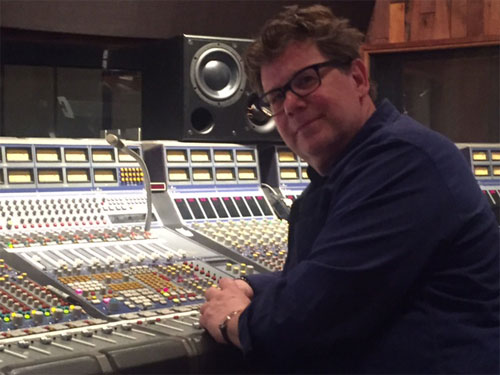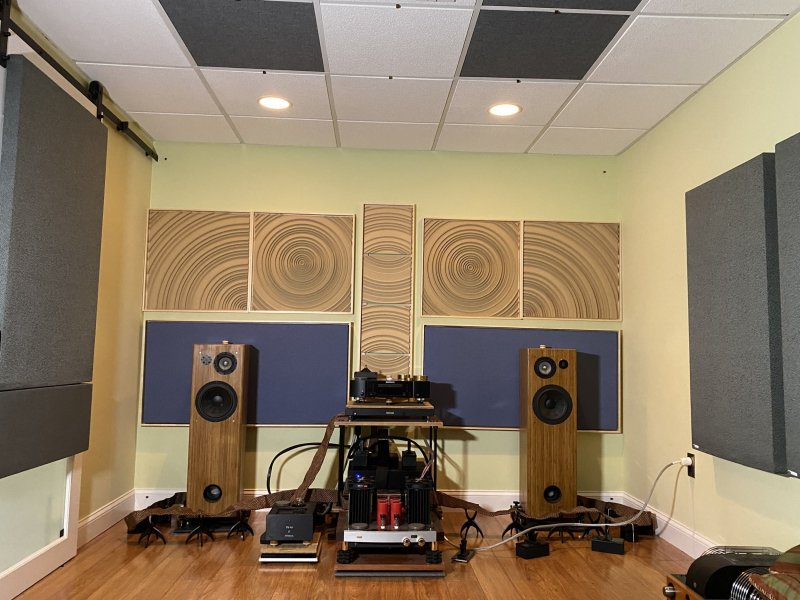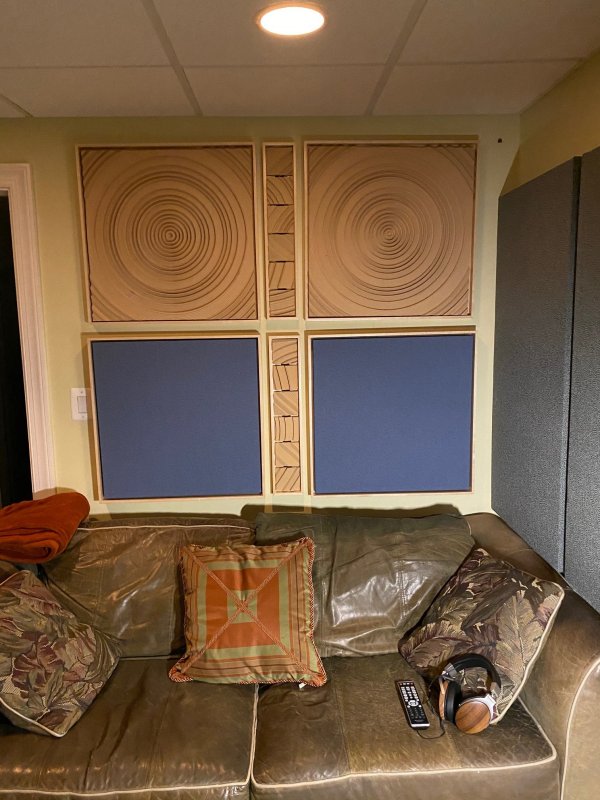100% agree with all of this. I read a paper a few years ago from either AES or ASA that showed the results of various types and thicknesses of carpets. Normal or even wool carpet simply kills reflections above 10 KHz.The effective frequency bandwidth of a fibrous absorber is primarily a function of the depth of the absorber and to a lesser degree, the angle of incidence of the incoming sound source to the absorber. A half inch thick carpet made from ideal materials (open weave jute backing, no plastic, wool fibers) will only act upon only the uppermost audible frequencies and thus not be very useful. You will have created a narrowband tone control which absorbs the frequencies which impart a sense of airiness to a recording. I want to at least absorb down to the 5kHz range to kill the potential for a hashy, harsh slap echo between floor and ceiling. So I'll place a double thickness of 1/2" felt underpad beneath to create an overall depth of 1.5" to broaden the absorption bandwidth usefully.
Here is the thing as I see it. Unless you are using a loudspeaker like a line array or horn based loudspeaker which is highly directional at mid and high frequencies, the primary floor reflection is a problem for all of us. You may be blessed with a room with high ceilings and the space to pull the loudspeakers out far away from the walls, far enough that primary wall and ceiling reflections are outside of the problematic 6ms range. But if you use any conventional wide dispersion loudspeaker design, the floor reflection will inevitably arrive in less than 6ms and therefore be a problem. If you use a multi-way loudspeaker the problem will be exacerbated. Your speaker's smooth frequency and phase behavior doesn't stand up outside of a pretty narrow +/- 15 degree vertical window due to lobing effects in the crossover between drivers. So that early floor reflection will have a jagged frequency response which will then recombine with the direct sound in an even more problematic fashion.
If it weren't so impractical to implement, I would place a pair of 3-4' square and 6" deep broadband absorbers at the primary floor reflections. I know a few other keen members here besides me have experimented with this. I suppose in a perfect world an all-out, ground-up, custom built room could incorporate large steel gratings in the floor beneath the carpet. These gratings would be centered in the anticipated vicinity of the primary floor reflections. Then you could place the deep broadband absorbers below floor level. You would have the performance benefit without the physical or aesthetic obstruction of a surface mounted absorber.
If you go back in this thread I posted about using an absorber on the floor. I bought a large canvas bean bag cover from Amazon and filled it with sheaded demin insulation. The effect is quite obvious -- Much less smearing in the vocal range. Even non-audiophiles can pick this up an an A-B test. I posted some REW data on this in a thread I started called "Help with floor bounce diffuser" if you are interested. You could use a couple custom made ottomans to accomplish the same thing and also make it look nice. I thought about building a couple for myself.
I had also thought about the in-floor "pit". The trouble comes in that you don't know exactly where the listening position and speakers are going to end up until you build the room. Very hard to do after everything is built.
The main reason I hate carpet is that it is much harder to get accurate speaker position than on a hard surface. But looks like Ron will overcome this by not carpeting the area the speakers sit in.







